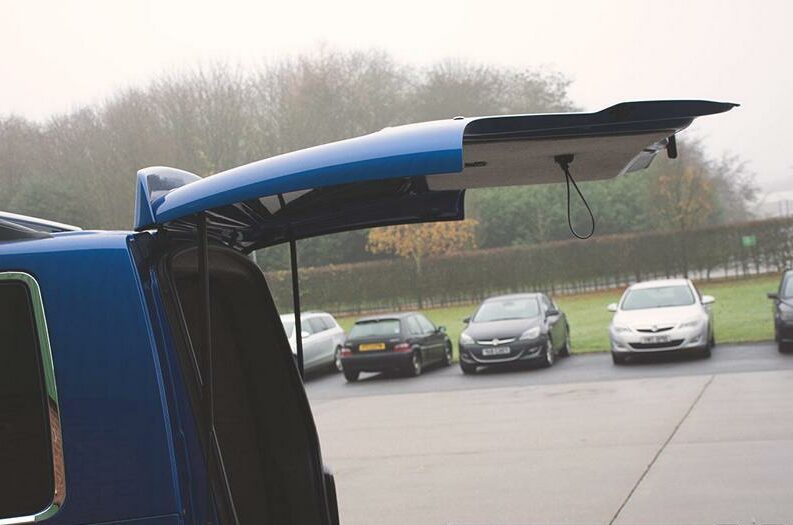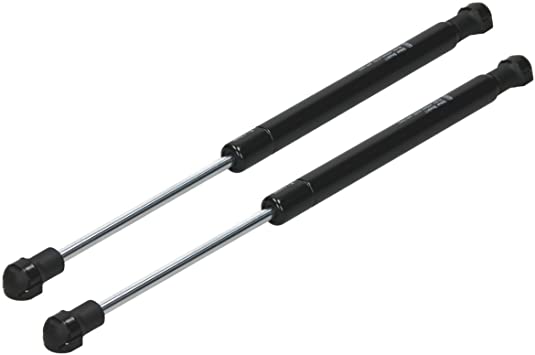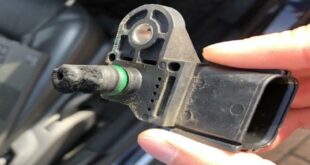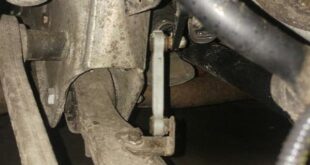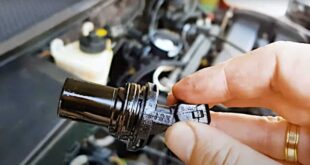Recently updated on September 22, 2023 at 07:50 am
Is a Gas spring rear or one of the bonnet damper malfunction? Then the following guide will help with regard to the diagnosis and the change. Gas pressure dampers are usually installed on the bonnet and tailgate. Both are almost identical in terms of structure, the way they are attached and their function. Replacement and symptoms in the event of a defect are also the same. Therefore, in this guide, we explain everything important on the subject using only the gas pressure damper on the tailgate. In general, however, our information can also be found on the Hood damper or a gas pressure damper installed elsewhere on the vehicle. The tailgate damper makes it easier to open the tailgate and keeps it up. However, once the dampers are worn out, the tailgate falls down uncontrollably and can injure someone. Changing the damper / dampers is easy and involves little effort.
What is the function of a tailgate damper on the vehicle?
The tailgate damper is located on the left and right on the lower side of the trunk lid. It works pneumatically and will therefore also gas spring or compression spring called. The damper has several tasks at the same time. It provides support when opening the trunk, is responsible for fully automatic opening and is used to keep the trunk lid open. The tailgate on the vehicle is often very heavy. Depending on the vehicle, it weighs between 30 and 80 kilograms, including the installed technology and rear window. If the tailgate damper fails, the weight suddenly falls down. This can lead to personal injury and damage to the trolley. Hence have the dampers are checked regularly and replaced if necessary.
How the tailgate damper works!
In terms of structure, gas pressure springs are not actually springs. Inside is a gas-filled tube, which is usually filled with nitrogen. A piston runs in the pressure tube on a piston rod with a seal. When closing and opening the trunk lid, the piston moves inside the pressure pipe. When the tailgate is open and in the extended position, the internal pressure is low.
When closing the tailgate, the pressure increases significantly, which is why the counterforce increases. An opening inside slows the movement of the gas and slows down the speed. As a result, the flap closes and opens more slowly. the Attachment the damper will usually have a Ball Head Coupling realized on the sides. This coupling must securely connect the springs to the body and trunk lid. In addition, it must also be movable, since the angle of the gas spring and the coupling changes when it is opened.
Symptoms: defective dampers!
There are generally two signs of a defective tailgate damper suddenly or creeping may occur. Either the tailgate is difficult to open or it no longer holds up by itself. However, the symptoms appear not always creeping up. Most of the time there is a sudden failure. If the tailgate no longer stays up or opens with difficulty, a damper may be defective. As a rule, the defective seal inside is responsible for the pressure loss. In older vehicles, however, the tailgate damper can also rust through and therefore leak. If this is the case, then you should have the defective damper replaced quickly before the second one fails as well. However, the pressure of the tailgate dampers can also increase due to fluctuating temperatures change. Therefore, the force is often lower in winter. one only slightly higher Exertion in the cold is therefore normal and not always a symptom of an early defect. So just test if the problem persists when the car is in the car for a long time Sun or in a warm one Garage stand.
What should I look out for when buying gas springs?
The gas springs for a small car or a van are different. In general, there are two important key figures that can be used to determine the right spring. this is the Gesamtlänge in millimeters as well as the Restoring or extension force in Newton. For example: Gas spring LIFT-O-MAT 50N-450N 198 mm Liftomat 250N. In general, the pressure and size of the dampers are adapted to the requirements of the individual vehicle. You should therefore only use springs whose strength and size match the original part identical are. If the wrong gas pressure spring is installed during the exchange, it may be that the tailgate or bonnet can no longer be closed, does not open fully or falls down by itself
Changing gas springs yourself – instructions
Due to the low price, we recommend the mutual exchange. The costs for this are manageable and if one gas spring is defective, the second one usually only has a limited service life, since it has been subjected to double loads at times and is also already the same age. The swap both dampers brings more security in the long run. For a change you usually only need one screwdriver. When removing the tailgate damper, however, the heavy flap can fall shut, you have to think about that.
1. The preparation
- First you unlock the boot lid and open it. Then, at best, one places a support (wooden slat, broomstick etc.) to keep the flap open. The support is employed so that it no pressure can exert on sensitive components such as the rear window. Alternatively, a helper should be asked to hold the hatch during the repair.
2. Loosen the damper
- The attachment of the damper is a ball head coupling, which on both sides from the damper. The connection is normally secured with a small retaining clip or clip. Detach the clip on the lid from the trunk by inserting the screwdriver and lifting it up. If the new damper does not come with a clip, keep the old one. It should also fit the new damper. You also have to be careful not to scratch the paintwork. After removing the clip, the gas spring can go through pull sideways can be easily detached from the ball. The process is then repeated on the other clutch. The tailgate damper should be held firmly during dismantling so that it cannot fall down and damage the paintwork.
3. Cleaning the clutch
- Any residue can be removed with a cloth or brush. Otherwise, the new gas spring may not engage correctly or may cause scratching and crunching noises. At the same time, a little grease can be advisable to protect the clutch from rusting.
4. Inserting the new gas spring
- Now the tailgate damper is replaced. The clip is usually always included for attachment and is already attached to the gas spring. Now attach the spring and press it onto the ball head. The bracket must be used for installation not be removed, this is usually (not always) necessary for the expansion. When inserting the spring, it snaps into place audible .
5. The test
- Now check whether the gas spring seated correctly. To do this, simply shake the gas spring a little. If it sits correctly, it will come loose not from the ball head. The gas damper should fixed, but still with the ball head of the tailgate movable, be connected. The process is then repeated on the other side of the vehicle. After replacing the two tailgate dampers, the trunk lid should open again easily and hold up at the same time.
Changing the tailgate dampers yourself - the effort and the costs!
With our guide, you can replace the gas springs on the vehicle yourself, regardless of whether it is the bonnet (bonnet lift) or tailgate. This usually requires little to no tools. The spare parts usually only cost between 5 and 30 euros per piece and therefore 10 to 60 euros for both sides. The working time is only a few minutes if the clutch is otherwise in order.
The following note is essential: For safety reasons, tuningblog recommends all repair, inspection and maintenance work exclusively to be carried out in a specialist workshop! Although our information is summarized to the best of our knowledge and belief, we cannot assume any liability for the content. All information is therefore "without guarantee".
Of course, that wasn't the end of it!
In this tuningblog category there are guides and instructions for common defects/repairs on the vehicle and for installing accessories/tuning parts. Our articles explain in a simple way common defects and the corresponding repairs, as well as explaining how the first signs of a defect become noticeable. In most cases, we also have initial clues to the repair instructions in our repair instructions approximate The costs of the pending repair are listed. The goal of our subcategory “Auto Repair Guide“ is to create a head start in knowledge for the next visit to the workshop with initial tips. This may save you from tedious troubleshooting and small things can perhaps be done directly on your own. The same applies, of course, to the installation of accessories/tuning parts. Here, too, we would like to help with the implementation with instructions and tips. There are many other posts on this as well. Below is an excerpt of the last and HERE there are all previous instructions:
|
Is the boost pressure sensor / intake manifold pressure sensor defective? The info! |
"tuningblog.eu" - we keep you up to date on the subject of autotuning and car styling with our tuning magazine and present you with the latest tuned vehicles from all over the world every day. It's best to subscribe to ours Feed and will automatically be informed as soon as there is something new about this post, and of course also to all other contributions.
 tuningblog.eu Your magazine about tuning the car
tuningblog.eu Your magazine about tuning the car
